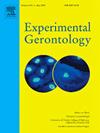秀丽隐杆线虫渗透和重金属胁迫的相互作用
IF 4.3
3区 医学
Q2 GERIATRICS & GERONTOLOGY
引用次数: 0
摘要
细胞应激是衰老过程中始终存在的一个方面,也是许多常见的年龄相关疾病(如癌症、糖尿病或神经退行性疾病)的主要驱动因素。随着年龄的增长,压力引起的损伤会随着时间的推移而积累,同时压力反应途径对抗这种损伤的功效也会降低。分子应激反应途径在单个应激源的背景下得到了很好的研究,但缺乏对同时遇到多个应激源时这些反应如何变化的理解。我们的工作目标是探索多个同时应激源对健康和生存的影响,并调查潜在的分子途径。为了实现这一目标,我们利用秀丽隐杆线虫来监测各种应激源对寿命变化的反应。我们同时将秀丽隐杆线虫暴露于高浓度氯化钠和氯化镉中,这两种物质分别会诱发渗透胁迫和重金属胁迫。我们发现,综合压力大大缩短了寿命,比任何一种单独压力造成的寿命缩短都要明显得多。我们的研究结果表明,通常在渗透胁迫下会增加的甘油水平,在两种胁迫相结合的情况下,与单独在渗透胁迫下检测到的水平相比,显著降低。这表明,镉的存在可能会使蠕虫对钠和其他渗透应激源敏感,因为镉会削弱细胞产生适当分子反应的能力。在正在进行的工作中,我们将继续剖析镉影响甘油生产和渗透胁迫反应其他方面的机制。本文章由计算机程序翻译,如有差异,请以英文原文为准。
The Interaction of Osmotic and Heavy Metal Stress in C. elegans
Abstract Cellular stress is an ever-present aspect of aging and a primary driver of many common age-associated diseases such as cancer, diabetes, or neurodegenerative diseases. As we age, stress-induced damage accumulates over time, along with reduced efficacy of stress response pathways at combatting such damage. Molecular stress response pathways are well studied in the context of individual stressors, but there is a lack of understanding of how these responses change when multiple stressors are encountered at the same time. The goal of our work is to explore the impact of multiple simultaneous stressors on health and survival, and to investigate the underlying molecular pathways involved. To accomplish this, we utilize the nematode Caenorhabditis elegans to monitor lifespan changes in response to various stressors. We simultaneously exposed C. elegans to high concentrations of sodium chloride and cadmium chloride, known to induce osmotic and heavy metal stress, respectively. We found that lifespan is drastically decreased by the combined stress, significantly more so than the reduction in lifespan caused by either individual stress. Our results show that glycerol levels, which are normally increased in response to osmotic stress, are significantly lowered when the two stresses are combined compared to levels detected for osmotic stress alone. This suggests that the presence of cadmium may sensitize worms to sodium and other osmotic stressors by blunting cells’ ability to mount an appropriate molecular response. In ongoing work, we will continue to dissect the mechanisms through which cadmium influences glycerol production and other aspects of osmotic stress response.
求助全文
通过发布文献求助,成功后即可免费获取论文全文。
去求助
来源期刊

Experimental Gerontology
医学-老年医学
CiteScore
7.30
自引率
2.60%
发文量
280
审稿时长
1 months
期刊介绍:
Experimental Gerontology is a multidisciplinary journal for the publication of work from all areas of biogerontology, with an emphasis on studies focused at the systems level of investigation, such as whole organisms (e.g. invertebrate genetic models), immune, endocrine and cellular systems, as well as whole population studies (e.g. epidemiology).
The journal also publishes studies into the behavioural and cognitive consequences of aging, where a clear biological causal link is implicated. Studies aimed at bridging the gap between basic and clinical aspects of gerontology, such as papers on the basic aspects of age-related diseases, are welcomed, as is research orientated toward the modulation of the aging process. Original research manuscripts, special issues, short reports, reviews, mini-reviews, and correspondence are published. Manuscripts on social aspects of aging and reports on clinical studies do not fall within the scope of the journal.
 求助内容:
求助内容: 应助结果提醒方式:
应助结果提醒方式:


